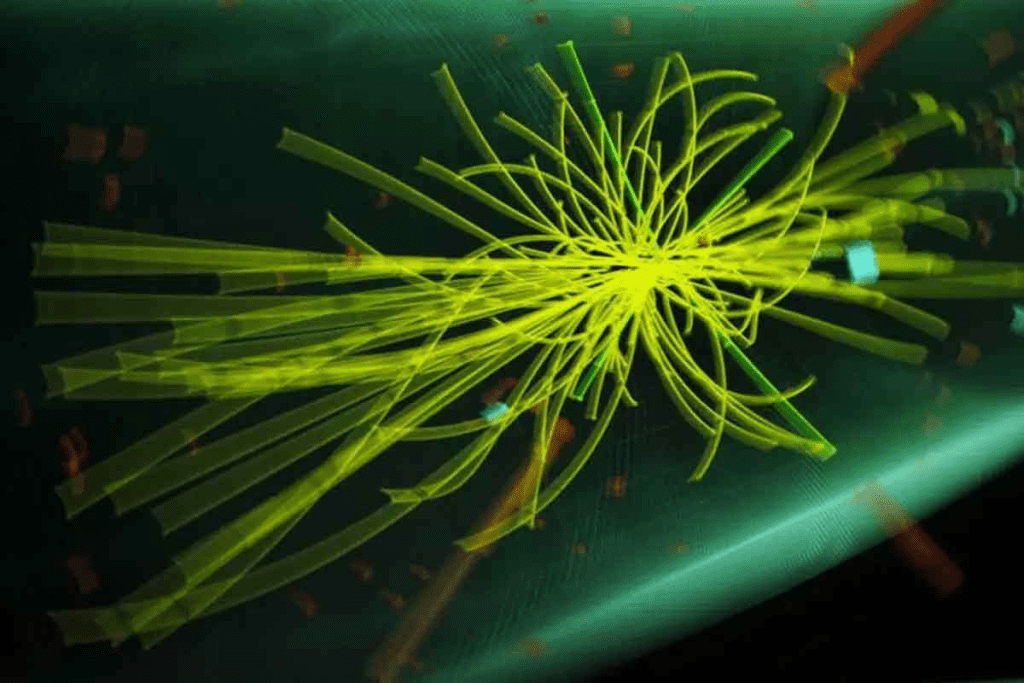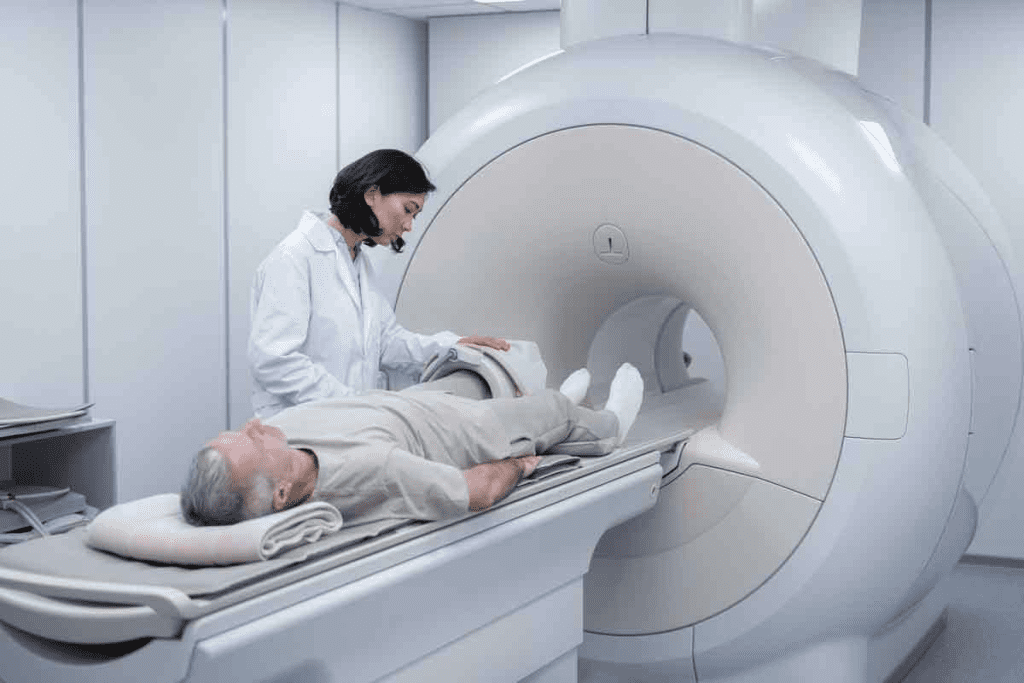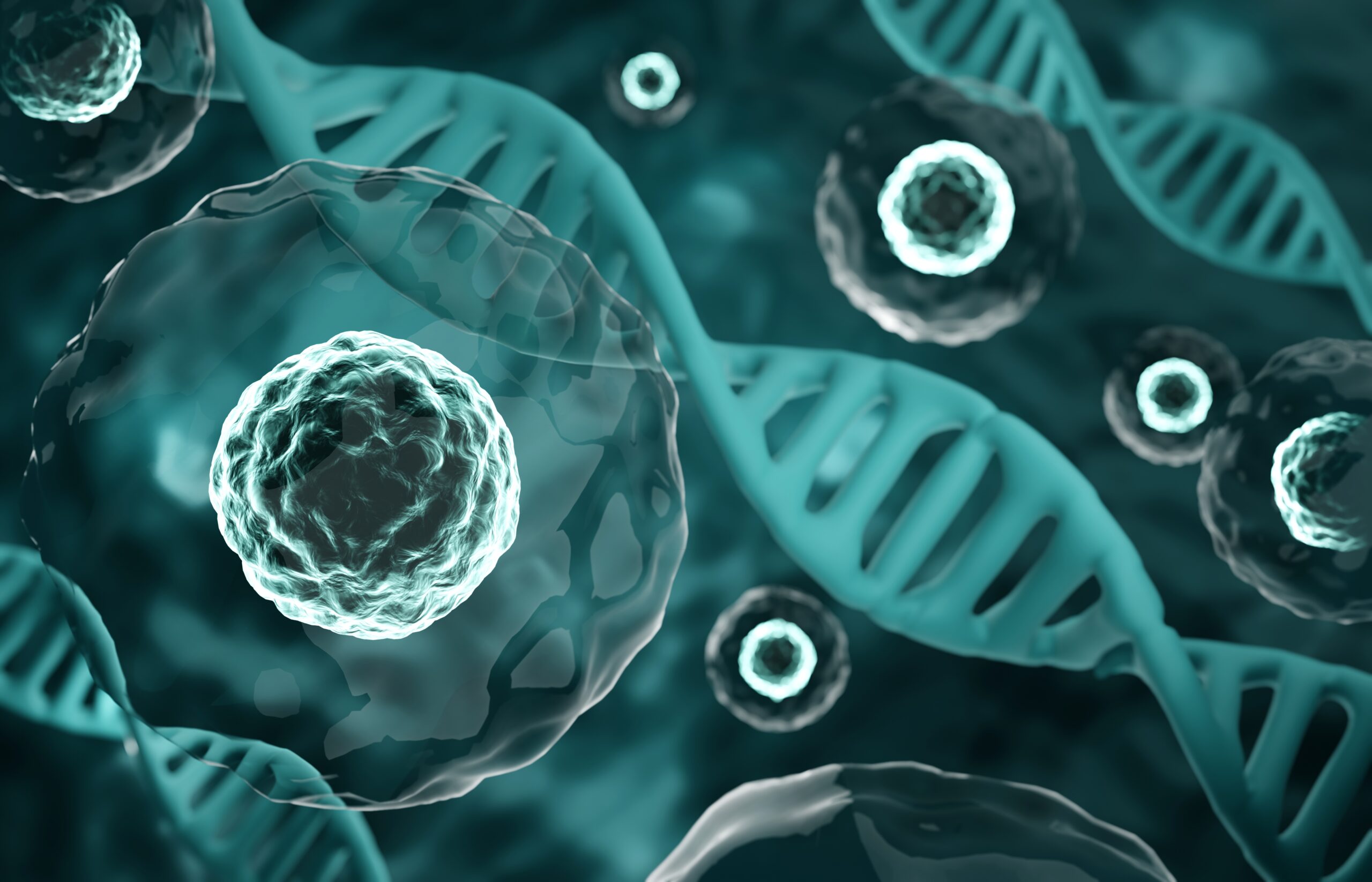Last Updated on November 27, 2025 by Bilal Hasdemir

Understanding radioactive decay is key in nuclear physics. It shows how unstable atomic nuclei turn into stable ones. At LivHospital, we use this knowledge for top-notch medical treatments and support. Isotope decay happens in different ways, like emitting subatomic particles. It’s also predictable through half-lives.
There are many main types of radioactive decay. These include alpha, beta-minus, beta-plus, gamma, electron capture, internal conversion, and neutron emission.
Key Takeaways
- Radioactive decay is a process by which unstable nuclei become stable.
- There are seven primary modes of radioactive decay.
- Understanding these decay modes is essential for nuclear physics applications.
- Liv Hospital utilizes knowledge of radioactive decay in medical treatments.
- The predictability of radioactive decay is crucial for various applications.
The Science Behind Radioactive Decay

Radioactive decay happens when unstable isotopes release energy. This process is natural and used in medicine, industry, and research. It’s a way for unstable nuclei to change and release radiation.
Defining Radioactivity and Nuclear Instability
Radioactivity means some atomic nuclei change on their own, sending out radiation. This happens because of an imbalance in the nucleus. Nuclear instability is key to whether an isotope decays.
The nucleus is kept together by the strong nuclear force. But if this balance is off, the nucleus becomes unstable. This leads to radioactive decay. Knowing what makes a nucleus unstable helps us understand decay.
The Fundamental Forces Driving Decay Processes
The decay processes are driven by the weak nuclear force and the electromagnetic force. The weak nuclear force is key in beta decay, where neutrons turn into protons or vice versa.
- The weak nuclear force is responsible for beta decay, where a neutron is converted into a proton, an electron, and a neutrino.
- The electromagnetic force influences the emission of gamma radiation, which occurs when a nucleus transitions from a higher-energy state to a lower-energy state.
These forces work together to start the decay processes. They help unstable nuclei turn into more stable ones by releasing radiation. As we look into different decay modes, it’s clear that knowing these forces is vital.
The Nature of Isotope Decay and Nuclear Stability

Isotope decay is closely tied to the nucleus’s stability. This stability comes from the balance between neutrons and protons. It’s not just about the number of protons or neutrons. It’s the ratio of neutrons to protons that matters most.
Neutron-to-Proton Ratios and the Valley of Stability
The neutron-to-proton ratio is key to nuclear stability. Nuclei with too many or too few neutrons are unstable. They decay to reach a stable state.
The “valley of stability” shows this clearly. It’s a graph of neutron number versus proton number. Stable nuclei form a valley. Unstable nuclei outside this valley decay towards it.
Nuclear Stability Factors
- The number of protons and neutrons
- The ratio of neutrons to protons
- The binding energy per nucleon
Radioactive decay releases energy as the nucleus becomes more stable. This energy comes from the difference in binding energy. Binding energy is the energy needed to break a nucleus into its parts.
The more binding energy per nucleon, the more stable the nucleus. As nuclei decay, they aim for higher binding energy. This releases excess energy.
Knowing what affects nuclear stability helps predict how isotopes decay. By looking at neutron-to-proton ratios and binding energy, we understand nuclear stability. This knowledge helps us see how nuclei change during radioactive decay.
Alpha Decay: Helium Nuclei Emission
Unstable atomic nuclei often stabilize through alpha decay by emitting helium nuclei. This process is a key way for heavy elements to decay. We will look into how alpha decay works, including the role of quantum tunneling. We will also see its uses in different areas.
Mechanism and Quantum Tunneling
Alpha decay happens when an unstable nucleus sends out an alpha particle. This particle is like a helium nucleus, with two protons and two neutrons. Quantum tunneling helps this particle get out of the nucleus. This is because it can pass through barriers.
Nuclear Transformations During Alpha Decay
When alpha decay happens, the parent nucleus changes into a daughter nucleus. The daughter nucleus has a lower mass number by 4 and an atomic number by 2. For example, Uranium-238 turns into Thorium-234 through alpha decay. This change is shown in a nuclear equation.
Applications in Smoke Detectors and Radiotherapy
Alpha decay is useful in many fields. In smoke detectors, it helps detect smoke by ionizing the air. In radiotherapy, alpha particles are being studied for cancer treatment. They have strong ionizing power and a short range, which helps protect healthy tissues.
Alpha decay is not just a basic nuclear process. It also has real-world uses. Knowing how it works and its effects is key to using it in technology and medicine.
Beta-Minus Decay: Converting Neutrons to Protons
Beta-minus decay is key to understanding how some isotopes become stable. It happens when neutrons turn into protons. This process involves the emission of beta particles, which are electrons from the nucleus.
The Weak Interaction and Beta Particle Emission
Beta-minus decay relies on the weak nuclear force, one of nature’s four fundamental forces. This force helps turn a neutron into a proton, an electron, and an antineutrino. The equation for this process is: n → p + e + νe.
Exploring beta-minus decay, we see the weak interaction’s complexity. It involves the exchange of W and Z bosons. These particles help in the neutron-to-proton conversion.
“The weak interaction is responsible for the decay of particles and is a fundamental aspect of the Standard Model of particle physics.” –
Physics Textbook
Industrial and Medical Applications of Beta-Minus Emitters
Beta-minus emitters are used in many ways, both in industry and medicine. In industry, they help measure material thickness and track liquids and gases. In medicine, they’re used in cancer treatments, especially in targeted therapies.
| Application | Description | Isotope Used |
| Cancer Treatment | Targeted therapy using beta-minus emitters attached to molecules that bind to cancer cells. | Yttrium-90, Lutetium-177 |
| Thickness Gauging | Measuring the thickness of materials using the attenuation of beta particles. | Strontium-90 |
| Radiotracers | Tracing the flow of liquids and gases in industrial processes. | Various beta-minus emitters |
Beta-minus decay is crucial for medical and industrial advancements. By understanding and using this process, we can create new treatments and technologies. These improvements can greatly enhance our lives and capabilities.
Beta-Plus Decay: Proton to Neutron Conversion
Beta-plus decay changes a proton into a neutron, sending out a positron. This change alters the element’s atomic structure, turning it into a new element.
This type of radioactive decay happens in unstable isotopes. It’s marked by the release of a positron, the opposite of an electron but with the same mass.
Positron Production and Annihilation
When a proton turns into a neutron, a positron is released. This positron moves until it meets an electron. Then, both particles are destroyed, turning their mass into gamma rays.
Positron annihilation is key in beta-plus decay. It’s used in medical imaging.
Medical Imaging Through Positron Emission Tomography
PET scans use beta-plus decay to see how the body works. They use isotopes that decay to create detailed images.
In a PET scan, a radioactive tracer is given to the body. The positrons it releases are detected, showing the body’s inner workings.
| Application | Description |
| Cancer Diagnosis | PET scans help find cancer by showing where the body is most active. |
| Neurological Disorders | PET scans help study the brain and diagnose brain diseases. |
| Cardiac Health | PET scans check how well the heart works and its health. |
Beta-plus decay and PET scans are vital in medicine. They help doctors make accurate diagnoses and improve medical science.
Gamma Decay: Electromagnetic Energy Release
Excited nuclei often return to their ground state through gamma decay, emitting gamma rays. This process is key in nuclear physics. It involves the release of electromagnetic energy from excited nuclei. We will explore the mechanisms behind gamma decay, its interaction with matter, and its significant applications in various fields.
Nuclear Energy Level Transitions
Nuclear energy level transitions happen when a nucleus moves from a higher energy state to a lower one. This movement releases energy in the form of gamma rays. It’s similar to atomic electron transitions but involves the nucleus.
The gamma rays emitted during these transitions have characteristic energies. This makes them useful for identifying specific nuclear isotopes.
Interaction of Gamma Rays with Matter
Gamma rays interact with matter through several mechanisms. These include Compton scattering, the photoelectric effect, and pair production. The type of interaction depends on the energy of the gamma rays and the atomic number of the material they are passing through.
Understanding these interactions is crucial for applications such as radiation shielding and radiation detection.
Applications in Cancer Treatment and Industrial Imaging
Gamma decay has significant applications in cancer treatment, particularly in radiation therapy. Gamma rays are used to destroy cancer cells. Additionally, gamma rays are used in industrial imaging for non-destructive testing of materials and equipment.
In cancer treatment, gamma rays are precisely directed at tumors. This minimizes damage to surrounding healthy tissue. In industrial imaging, gamma rays help inspect the integrity of welds and detect internal defects.
In conclusion, gamma decay is a vital process with diverse applications. We have discussed its mechanisms, interactions with matter, and its uses in medicine and industry.
Electron Capture: Orbital Electron Absorption
Electron capture is a process where an atomic nucleus absorbs an orbital electron. This leads to big changes in the nucleus. It’s key to understanding nuclear physics and has many uses in science.
Mechanism and Resulting Nuclear Changes
The process of electron capture involves taking an inner-shell electron, usually from the K or L shell, by the nucleus. This change makes a proton turn into a neutron. The atomic number goes down by one, but the mass number stays the same. This can make the nucleus more stable.
Nuclear Changes During Electron Capture:
| Process | Nuclear Change | Result |
| Proton Capture | p + e → n + ν | Atomic number decreases by 1 |
| Neutron Formation | Neutron number increases by 1 | Mass number remains the same |
Practical Applications in Scientific Research
Electron capture is used in many ways in science. It helps us study nuclear structure and unstable nuclei. It’s also used in methods like potassium-argon dating to find out the age of rocks.
Notable Applications:
- Nuclear spectroscopy
- Geological dating
- Study of weak nuclear interactions
Electron capture is crucial for understanding nuclear processes. It has ba impact on many areas of research.
Rare Decay Modes: Internal Conversion and Neutron Emission
Some nuclei go through rare decay processes that show us more about nuclear physics. We look at internal conversion and neutron emission to understand nuclear stability better. These processes are complex but offer unique insights.
Internal Conversion Process and Detection
Internal conversion happens when an excited nucleus gives its energy to an electron in orbit. This electron is then emitted. It’s a rare process that tells us about nuclear energy levels. To detect these electrons, we need special tools like magnetic spectrometers or semiconductor detectors.
Here are some ways we detect internal conversion electrons:
- Magnetic spectrometers to separate electrons based on their momentum
- Semiconductor detectors for high-resolution energy measurements
- Coincidence measurements to identify correlated events
Spontaneous and Induced Neutron Emission
Neutron emission is a rare process in very neutron-rich nuclei. It can happen on its own or be triggered by external factors like photons or particles. Studying neutron emission is key to nuclear physics, especially in reactors and medicine.
| Characteristics | Spontaneous Neutron Emission | Induced Neutron Emission |
| Nuclear Requirement | Extremely neutron-rich nuclei | Various nuclei, depending on the inducing factor |
| Triggering Factor | None, occurs spontaneously | External factors like photon or particle bombardment |
| Application | Nuclear physics research | Nuclear reactors, nuclear medicine, and research |
By exploring these rare decay modes, we learn more about nuclear behavior. This knowledge helps us advance in nuclear physics and its uses.
Half-Life and Mathematical Modeling of Radioactive Decay
Radioactive decay is a random process. BButthe concept of half-life helps us understand it. The half-life of a radionuclide is the time it takes for half of the radioactive atoms to decay. This idea is key in nuclear physics and affects many fields like medicine and the environment.
Exponential Decay Equations and Predictions
The math behind radioactive decay shows that the decay rate is tied to the number of atoms. This is shown in the equation: \(N(t) = N_0 e^{-\lambda t}\). Here, \(N(t)\) is the number of atoms at time \(t\), \(N_0\) is the initial number, \(\lambda\) is the decay constant, and \(t\) is time. The decay constant is linked to the half-life by \(\lambda = \frac{\ln(2)}{t_{1/2}}\).
These equations help us predict how radioactive a sample will be over time. The activity (\(A\)) is given by \(A = \lambda N\), showing the same decay pattern. Knowing and using these equations is key to safely handling radioactive materials.
Measuring Techniques for Different Half-Life Ranges
Measuring half-life depends on the radionuclide’s half-life. For short-lived ones, fast timing methods are used. For longer-lived ones, mass spectrometry is the go-to. This is because it can measure tiny amounts of radioactive material.
For radionuclides with half-lives in between, gamma-ray spectroscopy is used. It measures the intensity of gamma rays, which shows the radionuclide’s activity. By using these methods, we can accurately find the half-life of many radionuclides, from very short-lived to very long-lived.
Conclusion: The Enduring Impact of Radioactive Decay Research
Research on radioactive decay has changed how we see nuclear processes. It has helped us in medicine, industry, and science. We’ve learned about different types of decay, like alpha and beta decay, which help us understand how atoms change.
In medicine, radioactive isotopes help treat cancer and create images. They also help in smoke detectors and power generators. This research also helps scientists learn more about the nucleus and the forces that cause decay.
Studying radioactive decay opens up new possibilities for technology. It’s key to understanding nuclear processes and driving innovation. This research will keep shaping medicine, industry, and science, improving our lives.
FAQ
What is radioactive decay?
Radioactive decay is when unstable atoms lose energy by sending out radiation. This makes them more stable.
What causes radioactive decay?
It happens when a nucleus has too many neutrons for stability. This leads to radiation being released.
What are the different types of radioactive decay?
There are several types. These include alpha, beta-minus, beta-plus, gamma decay, and electron capture. Rare types include internal conversion and neutron emission.
What is the role of the weak nuclear force in radioactive decay?
The weak nuclear force causes beta decay. It changes a neutron into a proton or vice versa, sending out beta particles.
How does alpha decay occur?
Alpha decay happens when a nucleus sends out an alpha particle. This particle has two protons and two neutrons. It goes through quantum tunneling.
What is the significance of half-life in radioactive decay?
Half-life shows how long it takes for a radioactive substance to lose half of its initial amount. It’s a key property of radioactive isotopes.
How is radioactive decay used in medical applications?
It’s used in cancer treatment, radiotherapy, and PET scans. These are all medical uses.
What is the difference between spontaneous and induced neutron emission?
Spontaneous neutron emission happens naturally in some isotopes. Induced neutron emission is caused by external factors like radiation or particle bombardment.
How is gamma decay used in industrial imaging?
Gamma decay helps inspect materials’ internal structures. It detects defects or flaws.
What is electron capture, and how does it occur?
Electron capture is when a nucleus takes an orbital electron. This turns a proton into a neutron. It often releases X-rays or Auger electrons.
What is the significance of radioactive decay research?
Research on radioactive decay is crucial. It helps us understand nuclear processes. It also has many uses in medicine, industry, and science.
References
- Vaishnav, A. (2023). Radiological and Imaging Evidence in the Diagnosis and Management of Microbial Infections. Cureus. https://pmc.ncbi.nlm.nih.gov/articles/PMC10719059/
- Kumar, R. (2007). Role of Modern Imaging Techniques for Diagnosis of Infection. Indian J Radiol Imaging. https://pmc.ncbi.nlm.nih.gov/articles/PMC2223836/
- Rowe, S. P., et al. (2023). Molecular Imaging of Infections: Emerging Techniques for Targeting Bacterial Pathogenesis. The Journal of Infectious Diseases, 228(Supplement_4), S241-S249. https://academic.oup.com/jid/article/228/Supplement_4/S241/7288377






